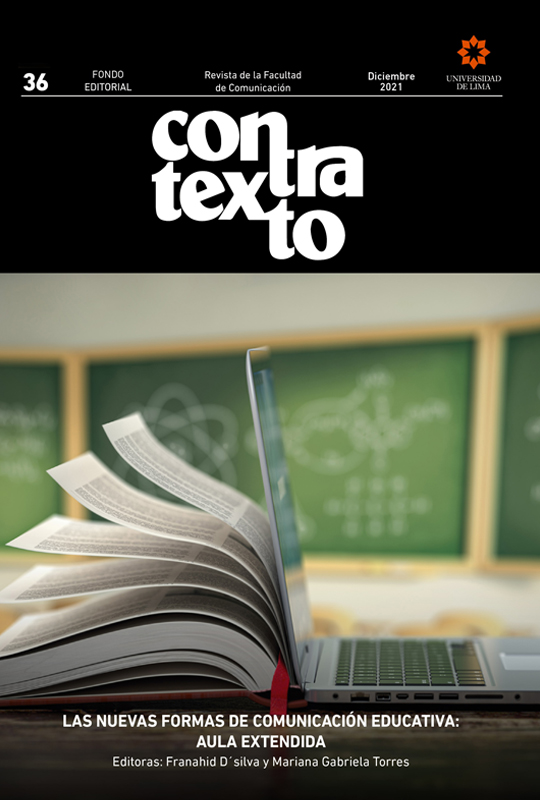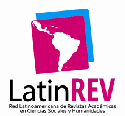Internet feminism: how social networks contribute to the development of the fourth feminist wave in Brazil
DOI:
https://doi.org/10.26439/contratexto2021.n036.5152Keywords:
feminism, social networks, Facebook, communication, Collective Não Me KahloAbstract
This article seeks to analyze how social networks contribute to the development of the fourth feminist wave in Brazil. Data such as the increase in the number of searches on online platforms, and the multiplication of feminist content pages on social networks, highlight the growing debate on the subject and justify the study’s relevance. The article reports on the development of the feminist movement, from its emergence to the current insurrection, and how it was formed. To this end, it uses bibliographic studies on feminism and the use of virtual space by social movements as a methodology, and the case study of the Brazilian feminist collective Não Me Kahlo. It also uses an interview with one of its founders and the quantitative analysis of the publications on the collective page on Facebook during January and June 2019. Based on this methodology, the study identifies the direct association between the current feminist insurrection and social networks as tools for communication, organization, and popularization of feminist content. The research also points out the benefits and difficulties that the use of social networks add to the current scenario of feminist activism.
Downloads
References
Ministério do Planejamento, Desenvolvimento e Gestão. (2018). Acesso à Internet e à Televisão e Posse de Telefone Móvel Celular para Uso Pessoal. Pesquisa Nacional por Amostra de Domicílios Contínua ‐ Pnad Contínua. Instituto Brasileiro de Pesquisa e Estatística - IBGE. ftp://ftp.ibge.gov.br/Trabalho_e_Rendimento/Pesquisa_Nacional_por_Amostra_de_Domicilios_continua/Anual/Acesso_Internet_Televisao_e_Posse_Telefone_Movel_2018/Analise_dos_resultados_TIC_2018.pdf
Barioni, P., De Lara, B., Malaquias, T., Moura, G., & Rangel, B. (2016). #MeuAmigoSecreto: Feminismo além das redes / [Não Me Kahlo]. Edições de Janeiro.
Blay, E. A. (2017). Como as mulheres se construíram como agentes políticas e democráticas: o caso brasileiro. Em L. Avelar & E. A. Blay (Orgs.), 50 Anos de Feminismo: Argentina, Brasil e Chile: A Construção das Mulheres como Atores Políticos e Democráticos. (pp. 65-95). Editora da Universidade de São Paulo.
Bogado, M. (2018). Rua. Em H. B. de Holanda (Org.), Explosão Feminista: arte, cultura, política e universidade. (2ª ed., pp. 23-42). Companhia das Letras.
Bogado, M., & De Cunto, J. (2018). Na música. Em H. B. de Holanda (Org.), Explosão Feminista: arte, cultura, política e universidade. (2.ª ed., pp. 179-204). Companhia das Letras.
Castells, M. (2013). Redes de indignação e esperança: movimentos sociais na era da internet. Zahar.
Costa, C. (2018). Rede. Em H. B. de Holanda (Org.), Explosão Feminista: arte, cultura, política e universidade. (2.ª ed., pp. 43-60). Companhia das Letras.
Duarte, M. Y. M. (2009). Estudo de Caso. Em A. Barros & J. Duarte (Orgs.), Métodos e técnicas de pesquisa em Comunicação. (pp. 215-234). Atlas.
Giantomaso, I. (06 de dezembro de 2018). Feminismo e Frida batem recorde de buscas no Google no Brasil. Jornal Folha de São Paulo. https://arte.estadao.com.br/focas/capitu/materia/feminismo-bate-recorde-de-buscas-no-google-no-brasil-frida-e-a-mulher-mais-pesquisada
Giddens, A. (2002). Modernidade e identidade. Zahar.
Giddens, A. (2008). Governo e Política. Em Sociologia. (4.ª ed., pp. 342-365). Artmed.
Gil, A. C. (2008). Métodos e Técnicas de Pesquisa Social. (6.ª ed., pp. 27-28). Atlas.
Goldenberg, M. (1998). A arte de pesquisar: como fazer pesquisa qualitativa em Ciências Sociais. (2.ª ed., pp. 85-91). Record.
Gomes, P. G. (2017). Dos meios à midiatização: um conceito em evolução. Editora UNISINOS.
Google Trends. (2020). Pesquisa sobre o termo feminismo. https://trends.google.com.br/trends/explore?q=feminismo&geo=BR
Holanda, H. B. de. (2018). Introdução: O grifo é meu. Em H. B. de Holanda (Org.), Explosão Feminista: arte, cultura, política e universidade. (2.ª ed., pp. 11-19). Companhia das Letras.
Langner, A., Mendonça, F., & Zuliani, C. (2015). O movimento feminista e o ativismo digital: conquistas e expansão decorrentes do uso das plataformas online. Congresso Internacional de Direito e Contemporaneidade. Universidade Federal de Santa Maria. http://coral.ufsm.br/congressodireito/anais/2015/3-12.pdf
Moraes, R. (2003). Mergulhos Discursivos: Análise textual qualitativa entendida como processo integrado de aprender, comunicar e interferir em discurso. Em M. do C. Galiazzi & R. Moraes (Orgs.), Análise Textual Discursiva. (pp. 85-113). Pontifícia Universidade Católica do Rio Grande do Sul.
Moreira, S. V. (2009). Análise documental como método e como técnica. Em A. Barros & J. Duarte (Orgs.), Métodos e técnicas de pesquisa em Comunicação. (pp. 269-278). Atlas.
Ribeiro, D. (2017). O que é: lugar de fala? Letramento.
Rose, D. (2002). Análise de Imagem em Movimento. Em M. Bauer & G. Gaskell (Orgs.), Pesquisa qualitativa com texto, imagem e som: Um manual prático. (2.ª ed., pp. 343-362). Editora Vozes.
Santos, M. E. M. (2018). Rede de comunicação como estratégia de ação política: ativismo feminista no Facebook em análise histórica contemporânea. Científic@ - Multidisciplinary Journal, 5(1), 53-63. http://periodicos.unievangelica.edu.br/index.php/cientifica/article/view/2630/2224
Silva, J. M. (2019). Feminismo na atualidade: a formação da quarta onda. Publicação Independente.
Stumpf, I. R. C. (2009). Pesquisa bibliográfica. Em A. Barros & J. Duarte (Orgs.), Métodos e técnicas de pesquisa em Comunicação. (pp. 51-61). Atlas.
Val Franco, B. D. (2017). #Feminismo: Desafios e oportunidades na apropriação das redes sociais para a difusão de discursos. [Monografia de bacharelado, Universidade de Brasília]. Repositório institucional da Universidade de Brasília. http://bdm.unb.br/bitstream/10483/18034/1/2017_BeatrizDelgadoValFranco.pdf
Downloads
Published
Issue
Section
License
All of the works published are licensed under a CC BY 4.0 Creative Commons Attribution license. (updated on March 1st 2021)
The content of the journal may be shared in any material or format. The content may be adapted, contributed upon and transformed. Both possibilities are only permitted in so far as they complete the following conditions:
- Attribution: Credit must be given where it is due, a link to the license must be provided and changes, if made, must be indicated. This should be done in the manner deemed appropriate, without suggesting that the licensor promotes you or your use of the material.
Ownership rights
The patrimonial rights for Contratexto are published under a Creative Commons BY 4.0 license, allowing authors to keep the patrimonial rights to their work without restrictions.
If a work published in Contratexto were to be copied, distributed, spread, or any other activities contemplated in the aforementioned license, the author(s) and the journal must be mentioned visibly and expressly.
Self-archive
This journal allows and encourages authors to post items submitted to the journal on personal websites or institutional repositories both prior to and after publication, while providing bibliographic details that credit, if applicable, its publication in this journal.

















